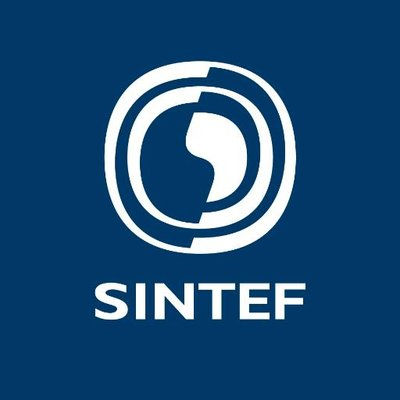预约演示
更新于:2025-12-06
RSL3
更新于:2025-12-06
概要
基本信息
非在研机构- |
权益机构- |
最高研发阶段临床前 |
首次获批日期- |
最高研发阶段(中国)- |
特殊审评- |
结构/序列
分子式C23H21ClN2O5 |
InChIKeyTXJZRSRTYPUYRW-NQIIRXRSSA-N |
CAS号1219810-16-8 |
关联
100 项与 RSL3 相关的临床结果
登录后查看更多信息
100 项与 RSL3 相关的转化医学
登录后查看更多信息
100 项与 RSL3 相关的专利(医药)
登录后查看更多信息
625
项与 RSL3 相关的文献(医药)2026-01-01·BIOORGANIC & MEDICINAL CHEMISTRY LETTERS
Targeting NFE2L1 signalling with small molecules to protect against Ferroptosis
Article
作者: Sedláček, Jindřich ; Majer, Pavel ; Šašková, Klára Grantz ; Šmahelová, Zuzana ; Machara, Aleš ; Svobodová, Lucie
Ferroptosis is a regulated form of cell death characterized by lipid peroxidation and excessive reactive oxygen species (ROS) accumulation, which are driven primarily by iron dysregulation. It plays a critical role in neurodegeneration, cancer, and ischaemia-reperfusion injury, making its modulation a promising therapeutic strategy. NFE2L1 (nuclear factor erythroid 2-related factor 1) is a key transcription factor in cellular homeostasis that mitigates oxidative and proteotoxic stress by regulating antioxidant, cytoprotective and proteostasis-related genes. In this study, we designed and synthesized a series of bis(dimethoxybenzylidene)oxocyclohexylsulfonamides and sulfamides that robustly activate NFE2L1. At low micromolar concentrations, these compounds protect human neuroblastoma SH-SY5Y cells from the ferroptosis-inducing agents erastin, RSL3, and ferric ammonium citrate (FAC)-induced oxidative cell death, demonstrating their potential as NFE2L1-targeting cytoprotective agents.
2026-01-01·EUROPEAN JOURNAL OF MEDICINAL CHEMISTRY
Structural optimization and biological evaluation of ferrocene-appended RSL3 derivatives as potent ferroptosis inducers
Article
作者: Wang, Yong ; Zhang, Xiaomin ; Liu, Yunyun ; Wang, Jing ; Wang, Hui ; Peng, Dian ; Fan, Xuejing
Ferroptosis inducers with novel chemical scaffolds are promising for overcoming cancer therapy resistance. In this study, we conducted structural optimization and biological evaluation of ferrocene-appended RSL3 derivatives as potent ferroptosis inducers for anticancer treatment. Through structure-activity relationship studies, compound A6 stands out with stronger antiproliferative ability (IC50 ≈ 3-5 nM) and higher ferroptosis selectivity than RSL3. Mechanistic studies confirmed the dual-function role of ferrocene acting as both a structural scaffold to maintain the inhibition of GPX4 and a reactive oxygen species (ROS) generator to enhance the vulnerability to ferroptosis of cancer cells. Importantly, significant tumor shrinkage and optimal safety profile of A6 in xenograft model demonstrates its potential for treating aggressive cancers. This study of developing ferrocene-appended ferroptosis inducers via structural optimization expands the toolbox for metal-based therapies against oxidative stress-related pathologies.
2026-01-01·BIOCHEMICAL PHARMACOLOGY
Estradiol alleviated chemotherapy-induced premature ovarian failure by blocking the ferroptosis via activating ESR2/Sirt1/Nrf2 pathway
Article
作者: Zhu, Fengyu ; Chen, Hongxu ; Han, Ke ; He, Zhuoying ; Zhang, Nie ; Zhong, Fei ; Cheng, Linghui ; Li, Jiaoyu ; Zhang, Ruixin ; Wang, Siyuan
Premature ovarian failure (POF) is a clinical syndrome characterized by a decline in ovarian function in women before the age of 40. The aim of this study is to investigate the therapeutic effects of estradiol (E2) on POF induced by chemotherapy and elucidate its potential underlying mechanisms. The results showed that E2 treatment increased the ovary index and number of follicles in mice. E2 supplementation inhibited cisplatin induced ferroptosis in mouse ovarian tissue and reversed the downregulation of nuclear factor erythroid 2-related factor 2 (Nrf2), solute carrier family 7 member 11 (SLC7A11), heme oxygenase 1 (HO-1) and glutathione peroxidase 4 (Gpx4) protein expression induced by cisplatin treatment. We also revealed that E2 alleviated cisplatin or RSL3-induced decreases in cell viability and increased lipid peroxidation (LPO) and reactive oxygen species (ROS) levels in KGN and SVOG cells. Moreover, we found that E2 increases Nrf2, SLC7A11, HO-1, and Gpx4 protein levels in vitro. Further studies revealed that E2 activated Sirt1 both in vitro and in vivo. Treating KGN or SVOG cells with the Sirt1 inhibitor EX527 prevented the ability of E2 to inhibit ferroptosis and Nrf2 protein expression. We demonstrated that estrogen receptor beta (ESR2) is involved in the positive regulation of Sirt1 expression. In summary, E2 supplementation alleviates chemotherapy-induced POF by inhibiting ferroptosis through the ESR2/Sirt1/Nrf2pathway activation.
8
项与 RSL3 相关的新闻(医药)2025-11-12
·百度百家
基于类器官的高通量筛选(HTS)正在彻底改变药物研发模式。然而,传统HTS设备处理细胞外基质(ECM)组分的复杂性,导致类器官在筛选过程中被迫采用悬浮培养体系,这种改变会引发其转录组特征与药物应答的显著变异。尽管目前已建立3D ECM包埋类器官的自动化生成技术,但操作简便性与时间效率的局限仍构成实现高通量化的关键障碍。
该研究开发了一种全流程三维ECM包裹类器官自动化高通量筛选(wp3D-OAHTS)平台,其通量性能显著优于现有已报道的三维类器官药物筛选系统。该自动化平台在13天内成功构建了超过10,000个均质化的神经内分泌宫颈癌(NECC)三维类器官穹隆结构,并系统评估了其对2,802种化合物的药物反应。
这种高效且可重复的研究方法最终成功筛选出5种能显著抑制NECC类器官生长的优选化合物,IC50低于10 nM。代表性候选药物Quisinostat 2HCl展现出显著优于临床现有药物的抗肿瘤疗效。
该平台显著提升了三维细胞外基质包裹类器官药物筛选的速率与效率,为罕见病新药研发提供了有力支持。
图形摘要
文章介绍
题目:全流程三维细胞外基质包裹类器官自动化高通量筛选平台加速罕见病药物研发
英文题目:Whole-process 3D ECM-encapsulated organoid-based automated high-throughput screening platform accelerates drug discovery for rare diseases
杂志:Life Medicine
影响因子:6.0
PMID:41089667
发表时间:2025年10月
Part.01
研究背景
类器官在HTS中的应用,尤其是患者来源类器官(PDO),已在药物研发与精准医疗领域获得广泛认可。类器官通常由封装在ECM中的干细胞或祖细胞发育而成,这种基质对于建立类组织架构、细胞间通讯以及细胞-ECM相互作用至关重要。
为适应基于传统液体分配器的高通量筛选平台,类器官培养方式被迫调整——使细胞悬浮于低基质环境中而非封装在三维ECM内。但即便短期悬浮培养也会导致类器官转录组特征改变,包括肿瘤标志物表达和关键信号通路的变化,这可能影响肿瘤细胞的药物敏感性。
为克服悬浮类器官高通量筛选与现有三维类器官高通量筛选的局限性,该研究开发了全流程三维细胞外基质包裹类器官自动高通量筛选平台(wp3D-OAHTS)。
基于该平台,针对NECC开展了包含2802个小分子的三维类器官HTS,鉴定出7种化合物具有显著活性。代表性候选药物Quisinostat 2HCI对NECC异种移植瘤生长的抑制作用优于现有临床用药。
总之,该平台在新药研发(尤其是罕见病治疗领域)具有重要应用潜力。
Part.02
研究关键点
开发一种全流程3D ECM封装类器官的自动化高通量筛选平台(wp3D-OAHTS),通过自动化操作实现大规模3D类器官的快速生成和药物反应的自动化评估。
利用wp3D-OAHTS对NECC类器官进行两步分层式高通量药物筛选,从2802种小分子化合物中筛选出具有低IC50的候选药物,并验证其药效。
体内实验验证Quisinostat 2HCl的抗肿瘤效果,证明其作为NECC治疗药物的潜力。
Part.03
研究结果
1、面向三维ECM包裹类器官构建与药物筛选的自动化高通量平台
wp3D-OAHTS多功能平台可兼容多种类器官培养。该平台集成三维ECM封装类器官点样仪、液体分配模块、自动化温孵模块及多模式检测模块(图1A),能在80%(体积比)ECM浓度下完成类器官封装与维持,实现完全基于三维ECM封装类器官的大规模高速药物筛选。
此外,三维ECM包埋类器官点样仪是处理ECM组分的关键设备。细胞-基质混合物经冷却控温、混匀后快速点样至孔板,随后进行凝胶化、培养基添加和孵育培养,全程由机械臂自动化操作,实现类器官生长监测和药物筛选,wp3D-OAHTS平台10天可筛选8694种药物,显著提升高通量筛选效率(图1B)。
图1
2、通过wp3D-OAHTS平台优化3D ECM包裹类器官培养的均质性与可重复性
手动分配ECM存在显著的孔间变异性,而自动点样仪能确保每个孔内精确的中心定位和微小的孔间差异,为生成稳定的3D ECM封装类器官提供了基础。
进一步测试表明,该平台培养的宫颈癌、胃癌和结直肠癌类器官展现出稳定的尺寸、形状均一性和强劲的增殖能力,活性测定结果分布区间狭窄,显著降低了类器官的变异性。
这些结果证明wp3D-OAHTS平台能够生成高度生物活性的均质化、可重复的三维ECM包裹类器官,其高精度和可靠性使其成为基于三维类器官的大规模高通量筛选的理想系统(图2)。
图2
3、wp3D-OAHTS平台支持在人类NECC类器官上进行2802种药物筛选
利用wp3D-OAHTS平台和包含2802个小分子化合物的药物库检测NECC患者来源类器官细胞系的药物敏感性。将NECC类器官单细胞与ECM混合后自动点样至12996孔板中培养,表现出高度均质性和强增殖能力。
在加入2802种化合物处理后,筛选出583种抑制率超过90%的化合物。所有筛选板的Z'因子均高于0.7,且对77种化合物的独立检测显示高度相关性,证明了平台的准确性、稳健性和可重复性。
在对NECC类器官进行药物筛选时,自动化平台识别出8种活性化合物,而手动筛选仅识别出6种,遗漏了RSL3和Elvitegravir。自动化平台展现出更好的重复性和准确性。
在583个初筛阳性化合物中,392个对NECC类器官有致死效应,且多数为在研药物,仅154个是FDA批准的。这些化合物的作用机制多样,其中蛋白酪氨酸激酶抑制剂占比最高。这表明该平台能揭示罕见疾病的未知靶点,为药物研发提供新方向(图3)。
图3
4、通过反向药物浓度梯度筛选确定了7种具有NECC扩展适应症潜力的候选药物。
为缩小NECC有效候选药物范围,从初筛活性化合物中选取前50种,采用1 μM和0.1 μM两种浓度进行二次筛选。结果在1 μM浓度下筛选出15种候选药物,在0.1 μM浓度下筛选出7种。
这些化合物涵盖多种作用机制,其中DNA损伤抑制剂和表观遗传调节剂占比较高。在0.1 μM浓度下,7种最有效的化合物(Quisinostat 2HCl、Topotecan HCl、Epirubicin HCl、Mitoxantrone 2HCl、Ixazomib、Clofarabine和Flavopiridol)显著降低类器官存活率并引发细胞死亡。
进一步的剂量效应曲线分析显示,这7种化合物均以剂量依赖性方式抑制NECC类器官生长,半数抑制浓度在纳摩尔水平,其中5种化合物(Mitoxantrone 2HCl、Clofarabine、Quisinostat 2HCl、Epirubicin HCl、Topotecan HCl)的半数抑制浓度低于10 nM,显示出高效性和作为NECC治疗候选药物的巨大潜力(图4)。
Mitoxantrone 2HCl、Clofarabine、Epirubicin HCl、Topotecan HCl和Ixazomib均为FDA批准的上市药物,而Quisinostat 2HCl与Flavopiridol为曾进入临床试验研究阶段的化合物。FDA目前批准的这些药物适应症中并不包含NECC,且Quisinostat 2HCl与Flavopiridol的临床试验数据也未涉及NECC治疗。
本研究结果表明,这两种药物具有扩大治疗适应症范围至NECC的潜在临床应用价值。
图4
5、代表性药物Quisinostat 2HCl对NECC展现出显著抑制效应
接下来聚焦于新型药物Quisinostat 2HCl,其IC50效价低于10 nM。经0.1 μM Quisinostat 2HCl处理48 h的NECC类器官转录组分析显示,有3815个差异表达基因,涉及多种代谢通路的显著下调,表明该药物可能通过代谢重编程抑制NECC类器官生长。
体内实验中,将NECC类器官移植至裸鼠皮下,Quisinostat 2HCl(10 mg/kg)隔日腹腔注射20天,显著抑制了异种移植瘤的生长,瘤体积和重量均减小,Ki67阳性细胞比例降低,cleaved caspase 3+细胞比例增加。与紫杉醇/卡铂联合方案相比,Quisinostat 2HCl单药治疗效果更优,展现出作为NECC治疗药物的潜力。
图5
6、wp3D-OAHTS平台通过限制类器官悬浮导致的假阳性,实现精准的药物反应检测
为探究基质低悬液培养条件是否会改变类器官药物筛选结果,该研究从2802个小分子化合物的3D ECM包埋类器官药物筛选数据中,选取了不同抑制率区间的化合物,在低基质悬浮培养的NECC类器官中进行验证实验。
在悬浮筛选中,类器官在给药当天会从ECM脱离,处于非贴壁悬浮状态,与全流程3D ECM包裹类器官筛选不同。在NECC类器官的药物筛选中,全流程3D ECM筛选与悬浮筛选结果存在差异。在3D筛选中无反应的化合物在悬浮筛选中表现出更高敏感性,且抑制率在30%-60%的化合物在悬浮筛选中抑制率显著提升。
这表明降维至二维悬浮系统可提高药物筛选命中率,但可能无法准确反映类器官在三维环境中的真实药物反应及耐药特征。三维ECM封装类器官筛选能保持类器官的三维结构,更准确地重现药物反应,对高通量药物筛选具有重要价值(图6)。
图6
小结
该研究开发的自动化类器官高通量筛选平台实现了大规模3D类器官的快速生成与药物反应自动化评估,相比人工操作更均一、精确且高通量。
利用该平台对NECC类器官进行两步分层式高通量药物筛选,从2802种小分子化合物中确定了7种具有极低IC50的候选药物,其中Quisinostat 2HCl在体内展现出显著抗肿瘤效果。
该平台通过消除悬浮培养导致的假阳性干扰,实现了精确的药物反应评估,显著提升了罕见病新药研发的速度与效率。
参考文献
Xu Z, Yang H, Zhou Y, Dzakah EE, Zhao B. Whole-process 3D ECM-encapsulated organoid-based automated high-throughput screening platform accelerates drug discovery for rare diseases. Life Med. 2025 Jun 14;4(5):lnaf021. doi: 10.1093/lifemedi/lnaf021.
临床研究
2025-10-19
癌细胞如何“自杀”还是“被迫牺牲”?
细胞死亡是生命体维持稳态的基本方式。从胚胎发育到疾病防御,细胞该死的时候死,才能保证机体正常运转。几十年来,科学家们对经典的凋亡(apoptosis)研究最为深入,并发现了炎症小体驱动的焦亡(pyroptosis)、受体信号调控的坏死性凋亡(necroptosis)等多种“程序性细胞死亡”。然而,癌细胞天生“狡猾”,往往能逃脱这些传统死亡通路。如何找到它们真正的“阿喀琉斯之踵”,是肿瘤治疗长期以来的难题。近年来,伴随代谢学和肿瘤学研究的交汇,一个新的领域逐渐浮出水面:代谢性细胞死亡(metabolic cell death)。这一类死亡方式并非由典型的“执行者蛋白”驱动,而是源于癌细胞代谢平衡的崩溃。通俗来说,就是癌细胞因为“吃太多”或“缺少某种营养”而陷入不可逆的代谢危机,从而走向死亡。
在这些代谢性死亡中,最早被深入研究的是铁死亡(ferroptosis)。随后,科学家们相继发现了两种新型死亡方式:铜死亡(cuproptosis)和双硫死亡(disulfidptosis)。近日,MD安德森癌症中心甘波谊、Albert Koong、姜大地教授团队(毛超和姜大地教授为共同第一作者)在Nature Reviews Cancer发表长篇综述,全面梳理了铁死亡、铜死亡和双硫死亡的机制、交叉调控以及在癌症治疗中的应用前景(图1)。这是该领域迄今最系统的总结之一。
图1
铁死亡:铁驱动的脂质过氧化风暴
铁死亡的发现可以追溯到 2012 年。它的核心机制是:铁作为催化因子驱动脂质过氧化反应失控累积,最终破坏细胞膜完整性并导致细胞死亡 (图2)。铁死亡不同于凋亡:它不涉及caspase蛋白裂解,而是表现为线粒体收缩、嵴减少等独特形态学特征。癌细胞往往因为对铁需求旺盛、脂质代谢异常,而处于铁死亡的“高危状态”。正常情况下,细胞依赖SLC7A11–谷胱甘肽(GSH)–GPX4轴抑制脂质过氧化,抵御铁死亡。但如果这一防御系统被削弱(如GPX4抑制剂RSL3作用),癌细胞就会迅速崩溃。
图2
铁死亡与癌症
越来越多证据表明,铁死亡是一种天然的肿瘤抑制机制。例如,经典抑癌基因p53就能通过抑制SLC7A11表达来增强铁死亡敏感性。相反,某些致癌突变则帮助癌细胞躲避铁死亡。更令人振奋的是,铁死亡与抗肿瘤免疫紧密相连。CD8⁺ T细胞释放的γ型干扰素(IFNγ)可以双重打击:一方面压制SLC7A11,另一方面提升ACSL4表达,从而促进肿瘤细胞铁死亡。这意味着,铁死亡不仅直接杀死癌细胞,还能和免疫治疗形成“正反馈”。
治疗潜力
目前,科学家已开发出多种铁死亡诱导剂(FINs)。虽然单药疗效有限,但与放疗、化疗、免疫检查点抑制剂联合时常显示出强烈协同效应。然而,铁死亡的临床转化仍面临挑战:
• 毒性问题:铁死亡在缺血性脑损伤、心肌损伤等疾病中也扮演“反派”,如何平衡疗效与副作用至关重要。
• 标志物缺乏:如何精准识别真正发生铁死亡的患者和肿瘤,仍需突破。
铜死亡:铜“太多”带来的致命打击
铜是细胞不可或缺的微量元素,参与能量代谢、抗氧化反应等。但一旦积累过量,铜就会化身“杀手”。2022年,科学家提出“铜死亡”概念。它的独特之处在于:铜离子与线粒体中的脂酰化蛋白结合,导致这些蛋白异常聚集,并伴随铁硫簇蛋白耗竭,最终引发蛋白质毒性应激 (图3a)。
铜死亡机制
铜死亡依赖线粒体代谢。关键因子FDX1和LIAS既是铜死亡的必要调控分子,也是其“牺牲品”,在过程中逐渐被耗竭。铜死亡药物多为铜离子载体,如Elesclomol和二硫仑(disulfiram)。它们能将铜运输进癌细胞,引发选择性死亡。
治疗前景
动物实验显示,铜死亡与放疗协同作用明显,能显著增强肿瘤抑制效果。此外,某些氧化磷酸化活跃的肿瘤(如部分脑瘤)对铜死亡尤其敏感。不过,铜死亡的临床应用还处于探索阶段,最大的不确定性在于如何控制铜的分布与毒性。毕竟,铜代谢失衡与 Wilson 病等疾病密切相关,肝脏和大脑尤其脆弱。
双硫死亡:二硫化物异常累积触发的“骨架崩塌”
在铁死亡研究如火如荼时,另一种全新死亡方式也于2023年被发现——双硫死亡。其核心矛盾源自SLC7A11。这一转运体帮助癌细胞摄入胱氨酸,抵御铁死亡;然而,在葡萄糖缺乏或戊糖磷酸途径(PPP)受阻时,NADPH耗竭,胱氨酸无法被还原,导致二硫化物累积,最终破坏肌动蛋白骨架,引发细胞快速死亡 (图3b)。
特点
双硫死亡不同于铁死亡:它不依赖脂质过氧化,而是直接冲击细胞骨架;它也不走凋亡通路,因此对传统细胞死亡抑制剂不敏感。在形态学上,双硫死亡细胞的肌动蛋白网络严重塌陷,细胞形态迅速瓦解。
治疗潜力
双硫死亡为SLC7A11高表达肿瘤打开了新大门。尤其是在KEAP1突变肺癌中,NRF2活化导致SLC7A11表达飙升,使这些肿瘤对葡萄糖高度依赖。此时,葡萄糖转运抑制剂(如BAY-876、KL-11743)能够诱导强烈的双硫死亡反应。此外,结合内质网应激反应抑制剂或靶向TXNRD1,也能放大双硫死亡效应。值得注意的是,双硫死亡可能比铁死亡更具选择性,因为正常组织普遍SLC7A11表达较低,这意味着潜在毒性更小。
图3
三种代谢性死亡的“暗中角力”
铁死亡、铜死亡和双硫死亡并非各自孤立,它们之间存在复杂的交互 (图4):
• 线粒体:铁死亡和铜死亡都依赖线粒体氧化还原状态;铜死亡直接作用于脂酰化蛋白,铁死亡则与铁硫簇功能相关。
• 谷胱甘肽(GSH):GSH是铁死亡的核心防御者,同时也能螯合铜离子抑制铜死亡;在双硫死亡中,GSH耗竭则加剧二硫化物应激。
• SLC7A11:它在铁死亡中是“保护者”,在双硫死亡中却是“死穴”。
这种“此消彼长”的关系提示:未来或许可以通过联合调控多种死亡通路,来实现对癌细胞的双重或多重打击。
图4
治疗转化的机遇与挑战
抗肿瘤免疫
铁死亡已被证明与T细胞功能紧密耦合,甚至可能成为免疫检查点治疗的新突破口 (图5)。双硫死亡是否也具有免疫原性,目前仍在研究中,但已有迹象显示其可能触发免疫刺激信号 (图6)。铜死亡与免疫关系尚待实验验证。
正常组织毒性
铁死亡在脑缺血和心脏损伤中是“坏角色”,如何避免正常组织受累是难点。铜死亡的风险集中在肝脑。双硫死亡理论上毒性较低,但临床长期安全性未知。
克服耐药
铁死亡已在多个模型中证明可以逆转放疗、化疗和靶向治疗的耐药性。铜死亡与放疗协同的潜力也得到验证。双硫死亡是否能成为“对抗耐药”的新武器,值得期待。
生物标志物
• 目前尚缺乏针对三种死亡的理想检测手段:
• 铁死亡常用脂质过氧化物检测,但特异性不足。
• 铜死亡潜在标志物是脂酰化蛋白聚集和铁硫簇蛋白耗竭。
• 双硫死亡则需检测肌动蛋白蛋白二硫键化,但临床应用门槛高。
图5
图6
展望
甘波谊、Albert Koong、姜大地教授团队在综述中指出,代谢性细胞死亡为癌症治疗提供了全新视角:
1. 癌细胞的代谢失衡本身就是它们的致命弱点。
2. 联合利用铁死亡、铜死亡和双硫死亡,可能为突破耐药和提升免疫治疗效果提供前所未有的机会。
3. 未来亟需找到更可靠的生物标志物,来指导患者分层和临床应用。
在肿瘤学这个竞争异常激烈的前沿,代谢性细胞死亡无疑是一块“新大陆”。它提醒我们,癌细胞不是坚不可摧的,它们的生存依赖于看似稳固、实则脆弱的代谢平衡。而当这根弦被拨动,就可能成为彻底击败癌症的关键。
原文链接:
https://www.nature.com/articles/s41568-025-00879-8
制版人: 十一
参考综述
1. Chao Mao, Dadi Jiang, Albert C. Koong, Boyi Gan, Exploiting metabolic cell death for cancer therapy. Nat Rev Cancer (2025).https://doi.org/10.1038/s41568-025-00879-8
学术合作组织
(*排名不分先后)
战略合作伙伴
(*排名不分先后)
·
转载须知
【非原创文章】本文著作权归文章作者所有,欢迎个人转发分享,未经作者的允许禁止转载,作者拥有所有法定权利,违者必究。
BioArt
Med
Plants
人才招聘
近期直播推荐
点击主页推荐活动
关注更多最新活动!
免疫疗法
2025-07-04
·梅斯医学
胰腺癌为恶性程度极高的实体肿瘤,其5年生存率约5-8%,且发病率和死亡率持续上升,全球范围内未见显著改善。主要病理类型为胰腺导管腺癌(PDAC),具有早期诊断难、易转移复发且对放化疗耐药等特点,成为临床治疗中的挑战。目前缺乏有效靶向药物及新型治疗策略,亟需开辟新途径。铁死亡(ferroptosis)是一种依赖铁、由脂质过氧化驱动的程序性细胞死亡方式,与传统凋亡、坏死及自噬机制不同。其调控涉及多重代谢通路,包括多不饱和脂肪酸磷脂合成与过氧化、铁代谢以及谷胱甘肽过氧化物酶4(GPX4)及其它非GPX4抗铁死亡防御系统。铁死亡在肿瘤发生、转移以及抗药性形成中起着关键作用,成为肿瘤治疗潜在突破口。目前已有多类铁死亡诱导剂(如Erastin、RSL3、FSP1抑制剂等)问世,但在体内疗效及临床应用上仍有限。鉴于胰腺癌高表达的ALDH1A1对肿瘤抗氧化和干细胞性质维护具有重要作用,且与治疗抵抗相关,ALDH1A1成为有潜力的治疗靶点。Sorcin作为一种钙结合蛋白,广泛参与钙稳态及多重信号通路调控,在多种肿瘤进展和多药耐药中被报道,但其作用机制尚有待深究。近日,中国南开大学Quan Zhang课题组在Journal of Hematology & Oncology发表题为“Disruption of the sorcin‒PAX5 protein‒protein interaction induces ferroptosis by promoting the FBXL12-mediated ubiquitination of ALDH1A1 in pancreatic cancer”的原创研究。该研究系统揭示了Sorcin蛋白通过调控PAX5/FBXL12/ALDH1A1轴抑制胰腺癌细胞铁死亡的机制,攻克了胰腺癌治疗中的难题。更进一步,通过筛选天然产物库发现Celastrol能靶向Sorcin,破坏其与PAX5的结合,诱导铁死亡,提示该蛋白-蛋白相互作用为胰腺癌治疗的新靶点。研究意义重大,为抗肿瘤药物研发开辟新途径。本研究基于TCGA及GEO数据库分析Sorcin在胰腺癌中的表达及临床相关性。细胞功能实验包括Sorcin及ALDH1A1基因敲减与过表达,检测铁死亡标志物(脂质ROS、MDA等)、肿瘤迁移、浸润能力和肿瘤干细胞特性。通过蛋白组学、共免疫沉淀(Co-IP)、染色质免疫沉淀(ChIP)、荧光素酶报告基因实验解析Sorcin调控机制。利用表面等离子共振(SPR)高通量筛选天然产物,结合细胞热稳定性检测(CETSA)、体内外结合实验验证Celastrol与Sorcin结合位点。体内利用细胞系和患者来源异种移植模型(CDX/PDX)评价药效。研究设计严谨,多角度验证发现。研究结果1. Sorcin高表达及其临床相关性TCGA数据分析显示胰腺癌患者Sorcin表达升高与OS、DSS、PFS、RFI均显著相关(p<0.05, 图.1A)。GEO多个数据集(GSE15471 等)验证Sorcin mRNA于癌组织显著高表达于正常组织(图.1B)。免疫组化染色证明Sorcin蛋白在胰腺癌组织尤其高分期组织中表达增强,与较差预后显著相关(图.1C-E)。图1 Sorcin高表达与胰腺癌临床分期及患者生存相关2. Sorcin促进胰腺癌细胞增殖、迁移和干性多个胰腺癌细胞系Sorcin高表达,敲低Sorcin后ALDH1A1表达下调,过表达Sorcin则升高(图.2A-B)。Sorcin敲低抑制胰腺癌细胞迁移、侵袭能力,过表达相反(图.2C-E)。干细胞样表型检测(肿瘤球形成,ALDH+比例)均指示Sorcin促进胰腺癌细胞干性维持(图.2F-J)。小鼠异种移植模型中Sorcin敲低显著抑制肿瘤生长,并伴随ALDH1A1蛋白水平下降(图.2K-M)。图2 Sorcin促进胰腺癌进展相关表型3. Sorcin抑制胰腺癌细胞铁死亡Sorcin敲低提高脂质过氧化产物(脂质ROS、MDA)水平;过表达则降低(图.3A-J)。电镜显示Sorcin敲低细胞线粒体典型铁死亡形态改变(皱缩、胼胝体减少)(图.3K)。Sorcin敲低引起GSDMD-N升高,提示与铁死亡相关的继发性催发的细胞焦亡(Pyoportosis),铁死亡抑制剂Liproxstatin1能抑制该过程(图.3M-N)。Sorcin敲低使细胞对铁死亡诱导剂(RSL3、Erastin)敏感性增强,过表达反之(图.4A-H)。Sorcin敲低与铁死亡诱导剂协同抑制细胞迁移和侵袭,铁死亡抑制剂减弱该效应(图.4I-N)。图3 Sorcin抑制铁死亡图4 Sorcin调控铁死亡敏感性4. ALDH1A1在铁死亡中的功能及其调控ALDH1A1敲低增加脂质ROS和MDA,减少迁移侵袭能力,增敏铁死亡诱导剂(图.5A-M)。ALDH1A1酶抑制剂DSF和DEAB也诱导脂质过氧化,增强铁死亡诱导剂效果(图.5L-P)。ALDH1A1过表达能逆转Sorcin敲低诱导的铁死亡(图.5Q-R),表明Sorcin通过调节ALDH1A1实现抑制铁死亡。图5 ALDH1A1介导铁死亡调控5. Sorcin通过非钙结合机制调控FBXL12及ALDH1A1Sorcin敲低细胞内Ca2+升高;通过钙螯合剂BAPTA-AM实验显示Sorcin调控ALDH1A1非钙依赖(图.6A-C)。蛋白组学提示Sorcin敲低显著上调E3泛素连接酶FBXL12表达(图.6D)。qPCR和免疫印迹证实Sorcin敲低上调,过表达下调FBXL12水平(图.6E-I)。IHC显示FBXL12在胰腺癌组织低表达,低FBXL12与不良预后相关(图.6J-L)。图6 Sorcin/FBXL12/ALDH1A1表达相关分析6. FBXL12促进ALDH1A1泛素化降解,抑制胰腺癌进展FBXL12敲低增强胰腺癌细胞迁移、肿瘤球形成,ALDH1A1显著升高,反之减弱(图.7A-F)。FBXL12敲低能逆转Sorcin敲低诱导的ALDH1A1降低和铁死亡增加(图.7G-I)。Proteasome抑制剂MG132阻断ALDH1A1降解,cycloheximide促使ALDH1A1降解,被FBXL12敲低抵消(图.8A-F)。免疫共定位及Co-IP证实FBXL12直接与ALDH1A1相互作用,并介导ALDH1A1泛素化(图.8G-K)。图7 FBXL12调控肿瘤特性图8 FBXL12介导ALDH1A1泛素化降解7. Sorcin通过抑制PAX5核转位调控FBXL12基因表达Promoter片段报告基因实验和ChIP明确PAX5结合FBXL12启动子核心区(P6片段,位点2为主要结合位点)(图.9C-G)。PAX5敲低降低,过表达上调FBXL12及下调ALDH1A1蛋白水平(图.9H)。Co-IP证实Sorcin与PAX5直接相互作用(图.9I-J)。Sorcin敲低促进PAX5核转位,过表达抑制(免疫荧光及核质分离Western blot)(图.9K-N)。整体模型:Sorcin在细胞质结合PAX5阻碍其入核,减少FBXL12转录,稳定ALDH1A1蛋白,抑制铁死亡。图9 Sorcin调控PAX5/FBXL12轴8. Celastrol作为新型天然铁死亡诱导剂靶向SorcinSPR筛选304种天然产物,发现Celastrol对Sorcin亲和力最高(Kd=2.13 µM)(图.10A-C)。Celastrol抑制多株胰腺癌细胞增殖,减少克隆形成,抑制肿瘤迁移(图.10D-G)。CETSA实验显示Celastrol提高Sorcin热稳定性,表明直接结合(图.10H-J)。室内click chemistry和生物素标记探针1进一步确认Celastrol细胞内外均特异结合Sorcin(图.10K-Q)。分子对接定位Celastrol以共价键结合Sorcin Cys194,Cys194S突变显著降低结合(图.10R-U)。图10 Celastrol靶向Sorcin结合验证9. Celastrol破坏Sorcin‒PAX5相互作用促进铁死亡Co-IP显示Celastrol明显抑制Sorcin与PAX5的相互作用(图.11A)。Celastrol促进PAX5核转位,增加FBXL12表达,降低ALDH1A1蛋白,增强ALDH1A1泛素化(图.11B-F)。Celastrol诱导脂质过氧化及MDA积累,与RSL3、Erastin等铁死亡诱导剂协同促进细胞死亡,铁死亡抑制剂法人和ferrostatin逆转Celastrol效应(图.11G-O)。图11 Celastrol诱导铁死亡机制及功能验证10. Celastrol体内抗肿瘤疗效CDX和PDX动物模型中,Celastrol(5mg/kg)显著抑制肿瘤生长,降低肿瘤体积与重量,无明显毒性(图.12A-J)。肿瘤组织IHC显示Celeastrol降低ALDH1A1,升高FBXL12表达。图12 Celastrol抑瘤及靶点表达改变研究意义与展望本研究首次阐明Sorcin蛋白作为胰腺癌铁死亡上游抑制因子的分子机制,开创了Sorcin‒PAX5‒FBXL12‒ALDH1A1轴调控铁死亡的新范式。铁死亡作为克服胰腺癌耐药性的新兴细胞死亡方式,开发针对Sorcin的药物具有重要的临床转化潜力。研究发现的天然产物Celastrol能够靶向Sorcin的关键位点Cys194,从而破坏Sorcin与PAX5的结合,激活铁死亡信号通路,显示出了宝贵的药物开发前景。胰腺癌目前缺乏有效治疗手段,Sorcin‒PAX5相互作用作为新型药物靶点为胰腺癌特别是耐药肿瘤治疗提供了新方向。未来可通过Celastrol结构优化提高特异性和安全性,同时验证机制在其他癌种中通用性。此外,结合纳米递送系统或免疫治疗,进一步增强铁死亡诱导剂的疗效亦具应用价值。高水平 sorcin 抑制铁死亡的机制以及 celastrol 在胰腺癌细胞中诱导铁死亡的机制的示意图梅斯编辑点评梅斯编辑认为,该研究系统解码了Sorcin在胰腺癌进展及铁死亡中的关键角色,不仅深化了铁死亡调控的理解,且开辟了靶向Sorcin的新药物筛选路径。Celastrol作为自然产物的崭新应用示范了天然药物资源在癌症精准治疗中的巨大潜力。后续研究可以探索Sorcin-PAX5轴以外的铁死亡新调控网络以及Celastrol临床的耐药性与安全性,助力转化医学进程。梅斯张博士补充,鉴于胰腺癌恶性度和传统疗法效果有限,铁死亡研究在该领域如一把“利剑”,对抗多药耐药。Sorcin的非钙结合功能令人耳目一新,表明生物功能的多样性。未来加大组学联合筛选与体内验证,推动新型铁死亡诱导剂的临床应用是大势所趋。原始出处Ding Y., Bai Y., Chen T., et al. Disruption of the sorcin‒PAX5 protein‒protein interaction induces ferroptosis by promoting the FBXL12-mediated ubiquitination of ALDH1A1 in pancreatic cancer. Journal of Hematology & Oncology 18, 27 (2025). https://doi.org/10.1186/s13045-025-01680-8撰文 | 梅斯医学编辑 | 阿拉斯加宝● 震撼!院长求着医生去进修,竟没人搭理!没绩效还受气,学的东西也用不上,“贴钱”进修的时代已过去!医生:线上学习渠道更丰富便捷●热议!患者反映医院停车费太贵:一天要收40元,比景区贵,这还是公益组织吗?市监局回应!医生:我们作为职工,被禁止停车,你就知足吧●别再不舍得开空调!Nature和子刊:温度调低,不仅能抑制多种癌症生长,还能燃脂减肥,改善代谢和心血管健康版权说明:梅斯医学(MedSci)是国内领先的医学科研与学术服务平台,致力于医疗质量的改进,为临床实践提供智慧、精准的决策支持,让医生与患者受益。欢迎个人转发至朋友圈,谢绝媒体或机构未经授权以任何形式转载至其他平台。点击下方「阅读原文」 立刻下载梅斯医学APP!
100 项与 RSL3 相关的药物交易
登录后查看更多信息
研发状态
10 条进展最快的记录, 后查看更多信息
登录
| 适应症 | 最高研发状态 | 国家/地区 | 公司 | 日期 |
|---|---|---|---|---|
| 三阴性乳腺癌 | 临床前 | 挪威 | 2025-04-29 | |
| 三阴性乳腺癌 | 临床前 | 挪威 | 2025-04-29 | |
| 三阴性乳腺癌 | 临床前 | 挪威 | 2025-04-29 | |
| 肿瘤 | 临床前 | 美国 | 2008-03-01 |
登录后查看更多信息
临床结果
临床结果
适应症
分期
评价
查看全部结果
| 研究 | 分期 | 人群特征 | 评价人数 | 分组 | 结果 | 评价 | 发布日期 |
|---|
No Data | |||||||
登录后查看更多信息
转化医学
使用我们的转化医学数据加速您的研究。
登录
或

药物交易
使用我们的药物交易数据加速您的研究。
登录
或

核心专利
使用我们的核心专利数据促进您的研究。
登录
或

临床分析
紧跟全球注册中心的最新临床试验。
登录
或

批准
利用最新的监管批准信息加速您的研究。
登录
或

特殊审评
只需点击几下即可了解关键药物信息。
登录
或

生物医药百科问答
全新生物医药AI Agent 覆盖科研全链路,让突破性发现快人一步
立即开始免费试用!
智慧芽新药情报库是智慧芽专为生命科学人士构建的基于AI的创新药情报平台,助您全方位提升您的研发与决策效率。
立即开始数据试用!
智慧芽新药库数据也通过智慧芽数据服务平台,以API或者数据包形式对外开放,助您更加充分利用智慧芽新药情报信息。
生物序列数据库
生物药研发创新
免费使用
化学结构数据库
小分子化药研发创新
免费使用


